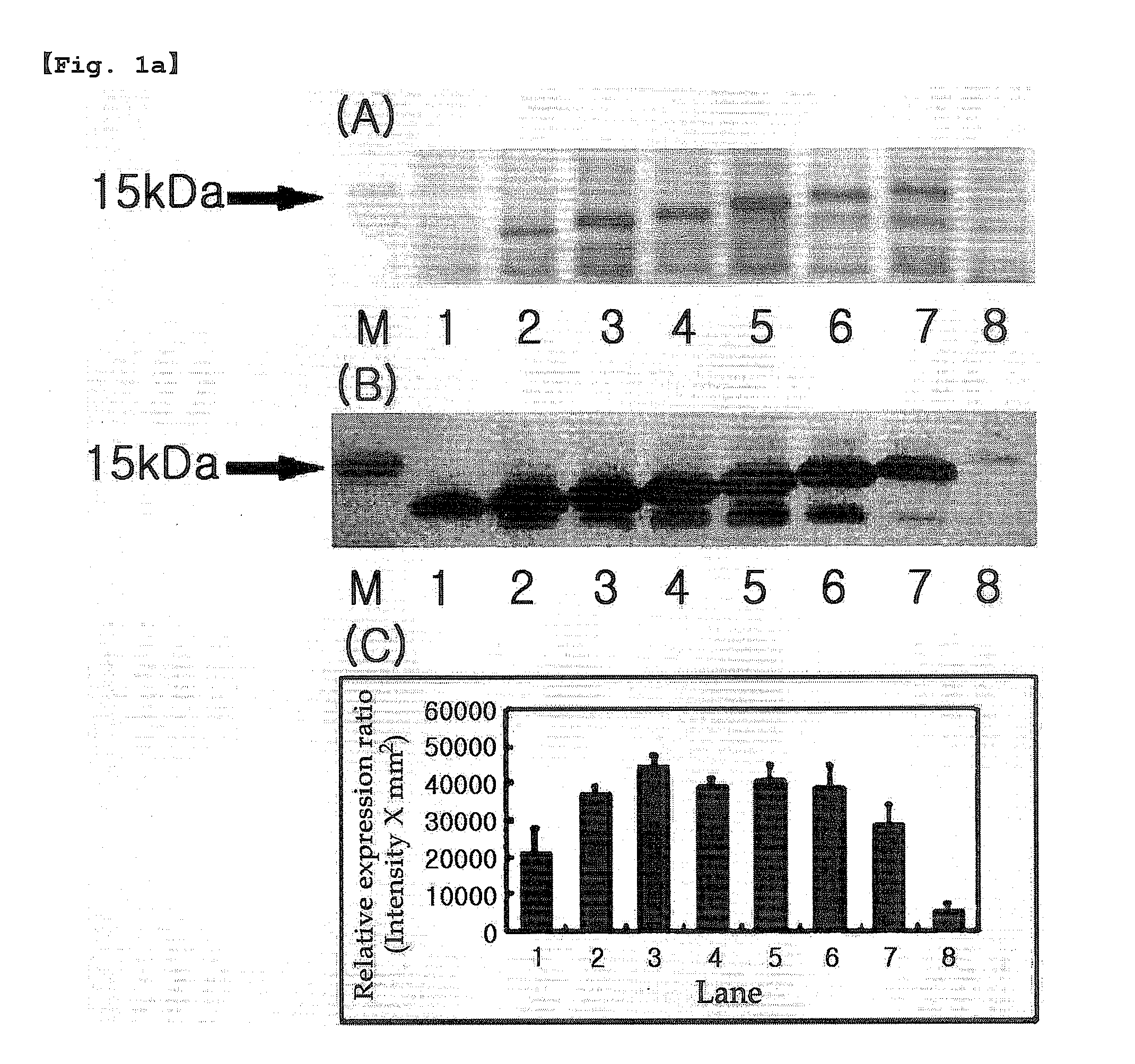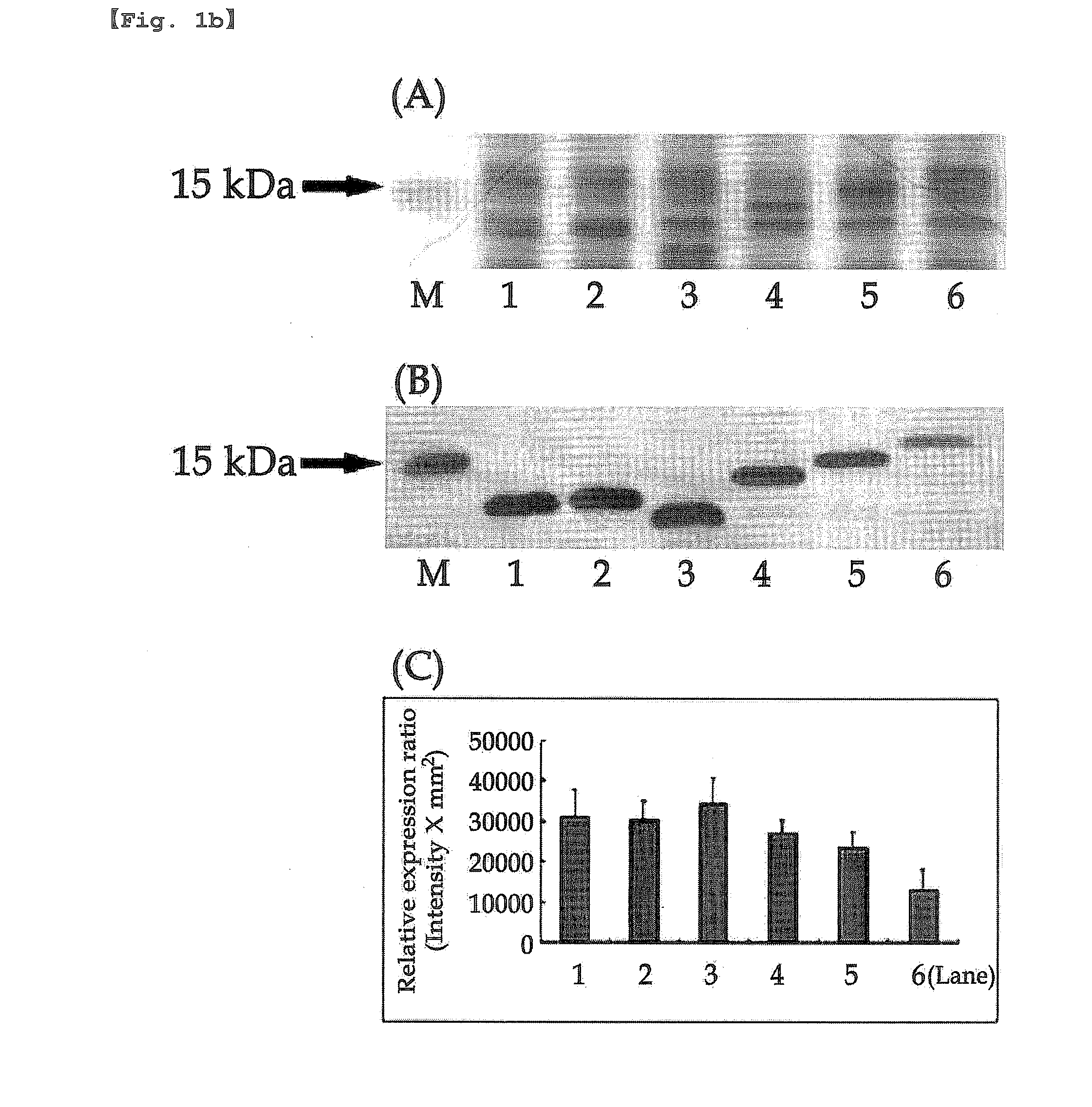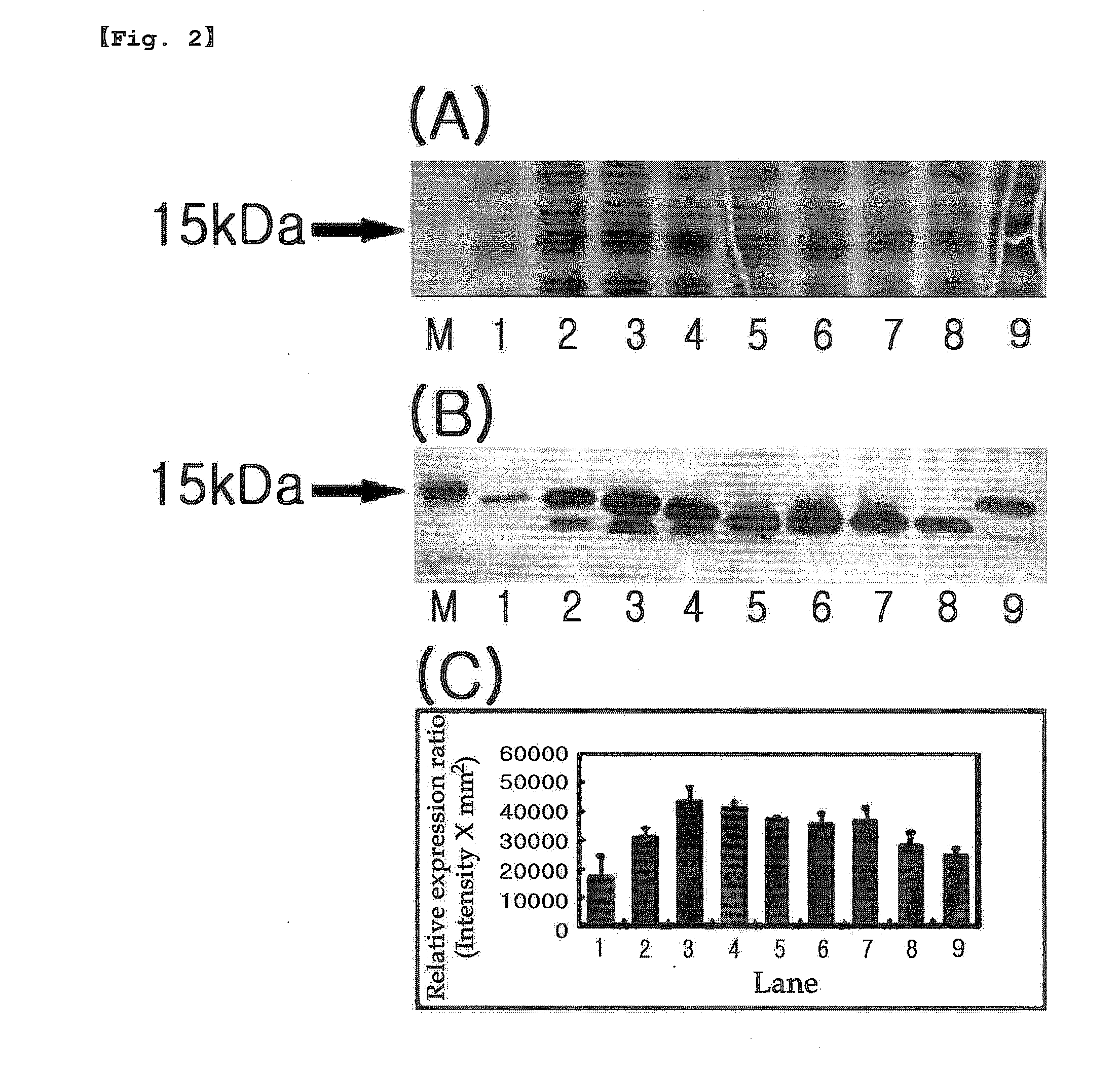Production of soluble recombinant protein by pi value control of n-terminal
- Summary
- Abstract
- Description
- Claims
- Application Information
AI Technical Summary
Benefits of technology
Problems solved by technology
Method used
Image
Examples
example 1
Cloning of Adhesive Protein Gene DNA Multimer Cassette
[0263]The present inventors constructed synthetic mefp1 DNA based on Mepf1 having the same sequence with that described in Korean Patent Publication No. 10-2007-0009453 and being represented by SEQ. ID. NO: 95 (Ala Lys Pro Ser Tyr Pro Pro Thr Tyr Lys), with the forward primer represented by SEQ. ID. NO: 96 (5′-TAC AAA GCT AAG CCG TCT TAT CCG CCA ACC-3′) which was the same as the one used in Korean Patent Publication No. 10-2007-0009453 and the reverse primer represented by SEQ. ID. NO: 97 (5′-TTT GTA GGT TGG CGG ATA AGA CGG CTT AGC-3′) which was the same as the one used in Korean Patent Publication No. 10-2007-0009453. Left adaptor (referred as “La” hereinafter) synthetic DNA was synthesized by using the forward primer represented by SEQ. ID. NO: 98 (5′-GAT CCG AAT TCC CCG GG-3′) harboring BamHI / EcoRI / SmaI sites which was the same as the one used in Korean Patent Publication No. 10-2007-0009453 and the reverse primer represented ...
example 2
Expression of an Adhesive Protein in the N-Terminal Variant Clone
[0264]The present inventors performed PCR using pBluescriptIISK(+)La-7×mefp1-Ra as a template to introduce the OmpA signal peptide (OmpASP) fragment for the soluble expression according to the controlled pI value of the N-terminal of Mefp1. As a result, expression vectors having N-terminal were constructed by linking pET-22b(+) vector with the OmpASP fragment or its variants having the different pI values, the leader sequence of Mefp1 and the mefp1 cassette prepared in Example 1 (Table 1-Table 4).
[0265]E. coli BL21 (DE3) was transformed with the expression vectors containing N-terminal constructed as shown in Table 1-Table 4 according to the conventional method, followed by culture in LB medium (tryptone 10 g, yeast extract 5 g, NaCl 10 g / l) supplemented with 50 μg / ml of ampicillin at 30° C. for 16 hours. The culture solution was diluted 200 times with the LB medium. 1 mM of IPTG was added to the diluted culture solut...
example 3
Effect of a Short Signal Sequence Fragment having the Increased pI Value and its Variants on the Expression of an Adhesive Protein
[0266]5′-end of the nucleotide sequence 7×mefp1 encoding the adhesive foreign protein Mefp1 was fused with coding sequences of OmpASP1(Met), OmpASP1-2(Met-Lys) and OmpASP1-3(Met-Lys-Lys), the fragments of OmpA signal peptide (OmpASP, Korean Patent Publication No. 10-2007-0009453, SEQ. ID. NO: 46 or Movva et al., J Biol Chem 255, 27-29, 1980) inducing the protein secretion, resulting in the construction of the clones pET-22b(+)(OmpASP1-7×mefp1*), pET-22b(+)(OmpASP1-2-7×mefp1*) and pET-22b(+)(OmpASP1-3-7×mefp1*) (Table 1).
[0267]E. coli BL21 (DE3) was transformed with the clone vectors constructed above by the same manner as described in Example 2, and the protein expression was quantified. As a result, the change of one amino acid (Lysine; Lys; K; pI=9.72) made a significant difference in the soluble expression of Met-7×Mefp1* (SEQ. ID. NO: 15) and Met-Lys-...
PUM
| Property | Measurement | Unit |
|---|---|---|
| Composition | aaaaa | aaaaa |
Abstract
Description
Claims
Application Information
 Login to View More
Login to View More - R&D
- Intellectual Property
- Life Sciences
- Materials
- Tech Scout
- Unparalleled Data Quality
- Higher Quality Content
- 60% Fewer Hallucinations
Browse by: Latest US Patents, China's latest patents, Technical Efficacy Thesaurus, Application Domain, Technology Topic, Popular Technical Reports.
© 2025 PatSnap. All rights reserved.Legal|Privacy policy|Modern Slavery Act Transparency Statement|Sitemap|About US| Contact US: help@patsnap.com



